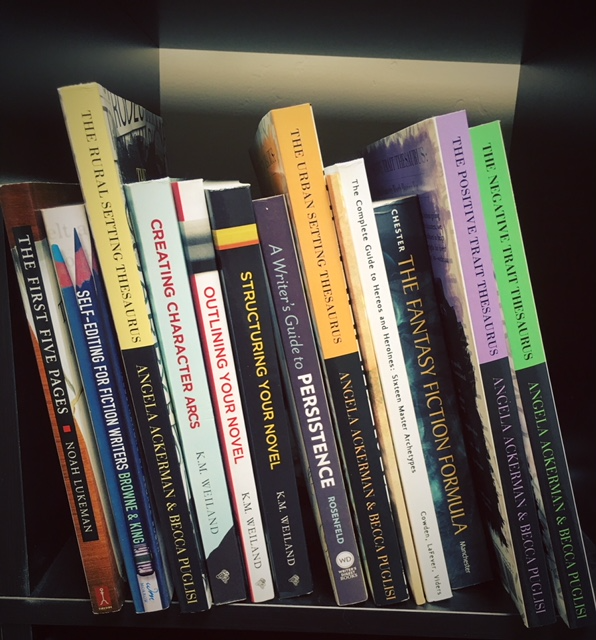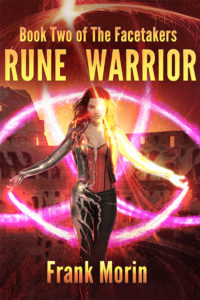As I have spent all of April deep inside the revisions for a novel I intend to publish early this summer, I have a lot of fresh thoughts on how to proceed once your first draft is complete. As with all writing advice, what works for me might not work for you.
I think I have the process by which I write a first draft pretty much locked down. I’ve written 9 projects in the past 24 months, and the process by which I got from word one to ‘the end’ has stayed fairly standard.
Once that first draft is done though, well my friends I’m afraid to say I’m still in the Wild West. On that day my newly completed story finds itself in a lawless land, where chaos is sheriff and revision misfires roll by like tumbleweeds.
Okay pardner, maybe it’s not *that* bad. But it was, for quite a while. It is only on my past 2 or 3 projects that a working process has started to show itself. Pull up a stool and have the bartender give us two shots of Ol’ Blinkin’ Cursor (my favorite drink) and I’ll spin you my tale.
(All right, I admit I’ve pushed the cowboy metaphors too hard here. I’ll hitch ‘em to the post for now.)
So for me, the key to revisions is knowing three things about myself as they relate to the first draft
- The things I do well
- The things I don’t do well
- The things I don’t do at all
I’ll go through what those mean to me, though of course they could mean something completely different for you.
HOWEVER…
I have a pre-revision process, which is to simply read the damn thing. Better yet, I have the damn thing read to me! using Word (although there are many other options) you can have the document read to you by your computer and you *will* catch little things that you’ll miss visually reading your book.
Seriously, I can’t recommend this method enough.For me, it is even better than reading your draft out loud.
THINGS I DO WELL
One thing I try not to do in revisions is undo what was working the first time. I am fortunate to have an alpha reader for much of my work, and she often reads the chapters as I write them. Thus, I usually enter the second draft with a little outside feedback, which is something I recommend.
In my case, my dialogue is pretty good on the first run so I’m try not to change much of that. Character bits usually land decently on first draft as well. I want to make sure that I’m not adding words to parts that read clean and quick the first time. In general, I try to only add words to clear up confusion or add description. (As I’ll explain below). Anything I was pumped and excited after I wrote it I try very hard not to mess with.
The danger here to me is in sanding off the sharp edges and making things more dull and bland by adding things that didn’t need to be there.
THINGS I DON’T DO WELL
Also known as – Action Scenes. Time to focus on the blocking and on making sure that I clearly described the setting and any relevant elements. Additionally, I need to fix over-wording and pacing issues that I often introduce to these scenes.
THINGS I DON’T DO AT ALL
There’s two versions of this for me. The first is stuff that I know I tend to be sparse with on my first draft. This is usually description and emotional demeanor – reactions to events. When I’m writing my first drafts, I don’t like to slow down for anything. When my momentum is lost it can be hard for me to recover.
The second part of this is to fill in all the little <> marks I made in my draft, each of them denoting something to be filled in later. (If you are interested – I have a whole post on these right here)
So those are my primary methods of getting a workable second draft, which is usually the one I will pass along to my beta readers. The trick at the end of this process (which could be any number of drafts) is determining when you are done, but that’s a blog post for another day.
Good luck!

 Any good writing website or book worth its salt will tell you your next step is to revise the sucker. Yes, you must do this step. Yes, everyone else hates it, too. Some books or fellow writer humans will advise you to put the book down for a set period of time to let it “rest,” like a good yeast bread needs a good rise. Unfortunately for your book, it doesn’t keep getting better in that resting period like bread does. No, no. It’s still the piece of crap you left a few weeks ago. So instead of the story rising like bread, think of it this way: YOU’RE doing the rising. You walked away for a few weeks and grew wise enough to rise above the piece of crap you made in order to come to a place where you can look past your subjective love of the story and objectively say, “Ah yes, indeed, this is a piece of crap.”
Any good writing website or book worth its salt will tell you your next step is to revise the sucker. Yes, you must do this step. Yes, everyone else hates it, too. Some books or fellow writer humans will advise you to put the book down for a set period of time to let it “rest,” like a good yeast bread needs a good rise. Unfortunately for your book, it doesn’t keep getting better in that resting period like bread does. No, no. It’s still the piece of crap you left a few weeks ago. So instead of the story rising like bread, think of it this way: YOU’RE doing the rising. You walked away for a few weeks and grew wise enough to rise above the piece of crap you made in order to come to a place where you can look past your subjective love of the story and objectively say, “Ah yes, indeed, this is a piece of crap.”


